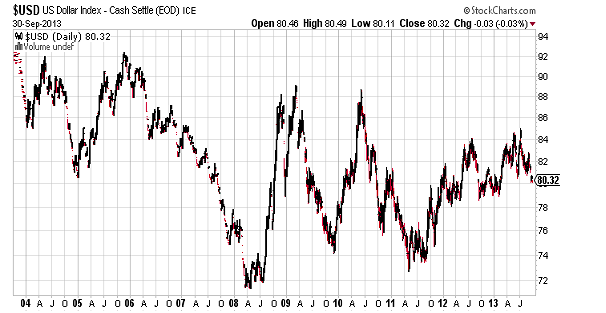Why I Remain Bullish on Gold
Submitted by Daily Gains Letter as part of our contributors program.
By Moe Zulfiqar
I am bullish on gold bullion. My convictions are very simple: central banks in the global economy are going to buy more of it. Their perspective towards the yellow shiny metal seems to be changing. As a result, the demand will increase, and with prices remaining suppressed, the supply will decline.
- With Smartphone Market Recovering, What To Expect From Qualcomm’s Q2 Results?
- Will United Airlines Stock Continue To See Higher Levels After A 20% Rise Post Upbeat Q1?
- Up 8% This Year, Why Is Costco Stock Outperforming?
- Down 7% In A Day, Where Is Travelers Stock Headed?
- What’s Next For Johnson & Johnson Stock After Beating Q1 Earnings?
- Should You Pick UnitedHealth Stock At $480 After A Q1 Beat?
What we have seen is that central banks around the global economy have become buyers of gold bullion. In the recent past, we have seen central banks from countries like Russia, Turkey, and Kazakhstan add the yellow precious metal to their reserves. In the second quarter of this year, central banks throughout the global economy added 71 tonnes of gold bullion to their reserves. (Source: “Consumer demand for gold up 53% in Q2 2013 led by strong growth in China and India,” World Gold Council web site, August 15, 2013.)
Those who already hold gold bullion in their reserves are holding onto it. For example, there were rumors about the Italian central bank selling its gold bullion for the sake of economic growth in the country. It turns out that the bank is staying firm on its take on the precious metal.
At the London Bullion Market Association’s annual conference, the director general of the Italian central bank, Salvatore Rossi, said that “Not only does it have the vital characteristic of allowing diversification, in particular when financial markets are highly integrated, in addition it is unique among assets in that it is not issued by any government or central bank, so its value cannot be influenced by political decisions or by the solvency of any institution.” (Source: Harvey, J. and Denina, C., “Banca d’Italia says gold reserves key to cenbank independence,” Reuters, September 30, 2013.)
Other central banks, like those of Germany and France, hold a very similar opinion, and have made clear that they will not sell their precious metal holdings.
In regards to those central banks that have been buying gold, mostly from emerging markets, I expect this buying to continue.
The reason for this is that the currencies around the world are fluctuating, and gold bullion gives them a prime hedge. For example, look at the chart below of the U.S. Dollar Index. This index compares the U.S. dollar to other major currencies in the global economy.
Chart courtesy of www.StockCharts.com
It should be very obvious by looking at this how stressful the foreign exchange reserve would become if one central bank only held U.S. dollars. In the last 10 years, the dollar has depreciated in value; with a huge national debt burden and continuous quantitative easing, it’s bound to go lower.
When the gold bullion market will turn is very hard to tell. For the short term, there is too much negativity around the yellow metal; it’s just not liked by investors these days. Long-term investors have to look at the bigger picture and remember not to expose their portfolio to just one asset. Even if they are bullish on gold bullion going ahead, they shouldn’t be risking their entire portfolio. They may be right over time, but short-term fluctuations can make huge dents in their savings.
Investors who believe gold bullion has a shiny future ahead may start to look for mining companies with good grades and reserves in the ground. The logic behind this is that once the gold bullion market turns, miners will be able to provide leveraged returns.
This article Why I Remain Bullish on Gold was originally published at Daily Gains Letter
